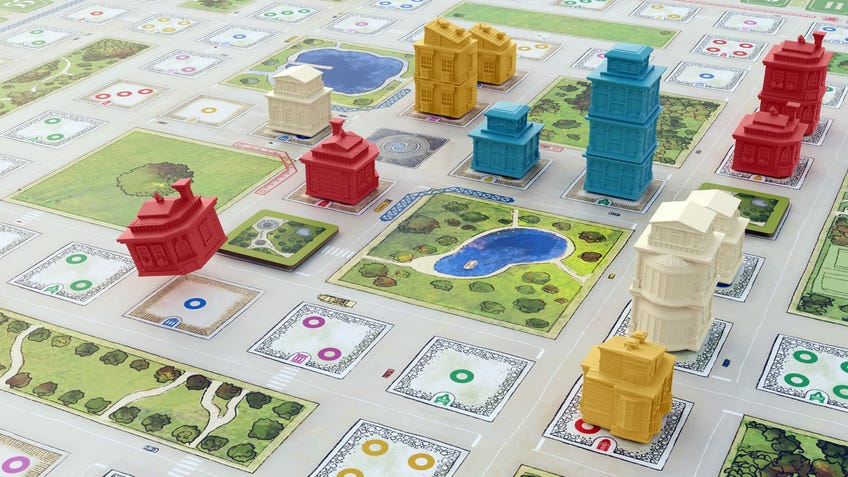Sunrise Lane is like a Ticket to Ride board game but with real-estate instead of trains
Perhaps the only way I’ll ever buy property.
Despite being released at Gen Con – which takes place a couple of months before Essen Spiel – we had the opportunity to play Sunrise Lane at this year’s Essen Spiel 2023 convention.
A reimaging of the 2012 board game Rondo, by Lost Cities’ designer and tabletop legend Reiner Knizia, Sunrise Lane is being published by Horrible Guild: the studio that’s probably best known for its narrative-heavy board game, The King’s Dilemma. Whilst it doesn’t feature any narrative elements, Sunrise Lane is a step-up from its previous incarnation when it comes to presentation considering that Rondo’s board looks as welcoming as a bumper book of algebra.

The theme of Sunrise Lane is purchasing real estate, giving the Millennials and Gen Z players a chance to play out their fantasies of property ownership. Players can buy plots of land by placing one or more of their player pieces onto a space on the board, racking up points based on the number shown on the space and how many pieces they’ve placed onto it. The higher the number listed on the space, the better the opportunity players have to score more points on it.
However, scoring points requires players to be able to play at least one card matching the colour and symbol of the space they want to place a piece on. If players want to put multiple pieces on the same space they’ll need to be able to play that number of matching cards from their hand. Players can get cards by drawing them from the deck but have to use their turn to do so, which means no opportunity to place pieces until their next turn rolls around.
If you have your eye on a particular space on the board you want to put pieces on then you’ll need to be quick, as once an adjacent space has been filled that place is up for the taking. This means that spaces that have larger numbers shown on them are more likely to be nabbed up than others. Nevertheless, sometimes it’s worth waiting in the hopes of drawing multiple cards of the same colour and symbol – thereby making your next placement that much more profitable.
The two opposite sides of the board are themed to a different colour and represent the chance to score additional points on top of the immediate points players gain from placing their pieces. Whilst one side of the board rewards players with the highest number of buildings they have there, the other side grants points to whichever player has the longest running row of pieces.

Though there aren’t a wide variety of ways to score points in Sunrise Lane, the simple but incredibly tense gameplay puts it on par with the likes of Ticket to Ride – making up for the lack of complexity with intense competition. The high level of player interaction means that every game of Sunrise Lane is different and there is no optimum strategy for success, just opportunities to grab points wherever you can find them.
Players who enjoy games like Ticket to Ride should pick up a copy of Sunrise Lane for a new twist on a very familiar formula.

